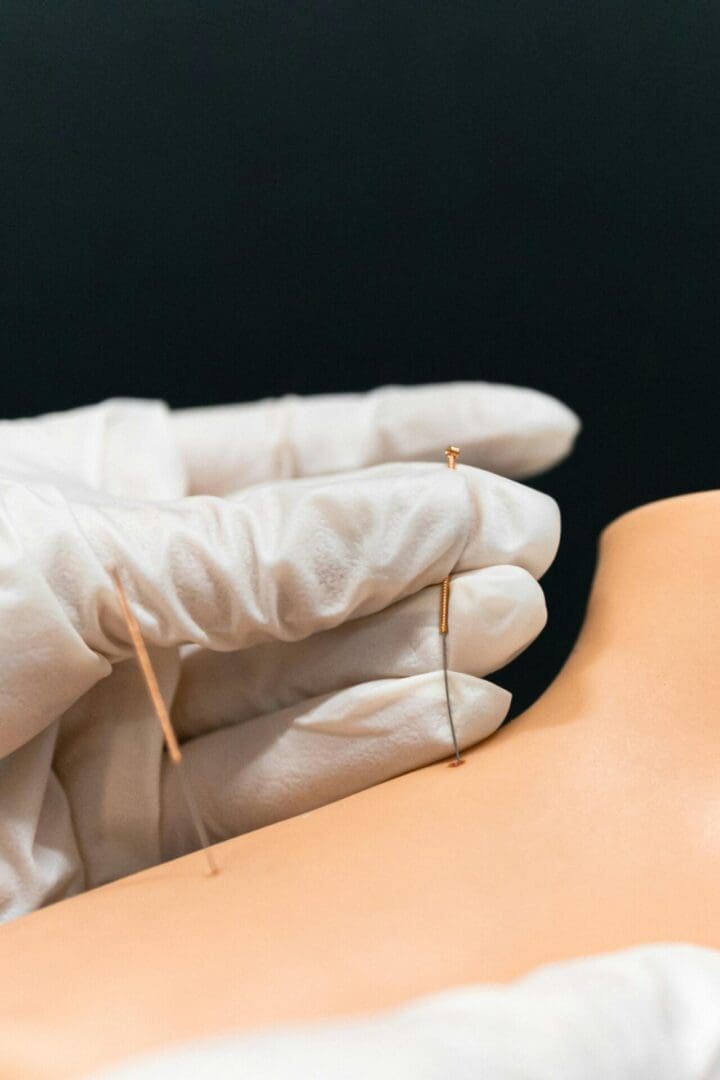Acupuncture for fascia: Unlocking the Body’s Healing Potential
How Acupuncture for Fascia Enhances Healing and Movement
Acupuncture for fascia has become a focal point in understanding how traditional therapies can influence modern health. In recent years, the scientific understanding of acupuncture for fascia has expanded, offering new insights into how this ancient practice works. One compelling explanation lies in its interaction with the fascia, the body’s connective tissue network.
Fascia is a thin, web-like tissue made of collagen that wraps around and connects everything in your body: muscles, bones, organs, nerves, and blood vessels. This network is a connected, continuous structure throughout the body, allowing it to transmit forces, signals, and nutrients. Beyond its structural role, fascia is sensitive and responsive and plays a key role in communication and movement.
How Does Acupuncture for Fascia Interact with the Body?
When an acupuncture for fascia practitioner inserts a needle, coming in contact with the superficial, medial, or deep fascia, it affects it in several ways:
Releasing Tension
Fascial restrictions, or adhesions, can cause pain and limit movement. Acupuncture for fascia needles create a mechanical effect in the tissue, called “needle grasp,” that helps release these restrictions. This restores mobility, reduces pain, and helps the fascia to realign.
Stimulating Communication
Fascia is rich in sensory nerves and responds to mechanical and electrical signals. The piezoelectric properties of fascia—its ability to generate electrical charges when stretched—mean that acupuncture for fascia can enhance the body’s internal communication pathways, encouraging healing.
Connecting Distant Areas
Fascia’s continuity explains how a needle in one part of the body can affect another. For example, treating an acupuncture for fascia point on the foot can relieve tension in the back because these areas are connected through fascial pathways.
Enhancing Blood and Qi Flow
Fascia surrounds blood vessels and lymphatic channels. By releasing tension and improving mobility, acupuncture for fascia enhances circulation and the flow of Qi, the vital energy described in Traditional Chinese Medicine.
Real-World Examples
-
Chronic Back Pain: Acupuncture for fascia treatments often target fascial tightness along the back’s myofascial meridians, reducing pain and restoring movement.
-
Plantar Fasciitis: Needles inserted in both the foot and calf release tension in the fascial connections, providing relief from heel pain. While this provides temporary relief in most cases, the pain does not resolve until the fascia higher up in the structure, the hips and low back, is released.
A Holistic Approach
Fascia bridges the gap between the traditional TCM view of meridians and the modern understanding of body mechanics. By working with the fascial network, acupuncture for fascia offers a powerful tool to address pain, promote healing, and restore balance—not just in one area, but throughout the entire body.
 Expanding the Benefits of Acupuncture for Fascia
Expanding the Benefits of Acupuncture for Fascia
Beyond pain relief and improved mobility, acupuncture for fascia offers a range of additional benefits that contribute to overall well-being. Fascia is not only a physical structure but also deeply involved in the body’s sensory and nervous systems. By targeting the fascia, acupuncture can influence the autonomic nervous system, helping to reduce stress and promote relaxation. This calming effect supports the body’s natural healing processes and can improve sleep quality, mood, and energy levels.
Another important aspect of acupuncture for fascia is its role in enhancing lymphatic drainage. Fascia surrounds lymphatic vessels, which are responsible for removing toxins and waste products from tissues. When fascia becomes tight or restricted, lymphatic flow can be impaired, leading to swelling or a buildup of metabolic waste. Acupuncture helps to release fascial restrictions, facilitating better lymphatic circulation and supporting detoxification.
Athletes and active individuals often find acupuncture for fascia especially beneficial. The fascia plays a critical role in force transmission and movement efficiency. By maintaining healthy, pliable fascia through acupuncture, athletes can reduce the risk of injury, improve performance, and speed up recovery times. This holistic approach addresses not just symptoms but the underlying fascial imbalances that may contribute to chronic pain or dysfunction.
If you are experiencing persistent pain, limited range of motion, or simply want to enhance your body’s natural healing capacity, acupuncture for fascia may be a valuable addition to your wellness routine. Combining this therapy with other modalities such as physical therapy, massage, or mindful movement practices can amplify the benefits and promote lasting results.
Take the Next Step Toward Healing
Ready to unlock your body’s healing potential through acupuncture for fascia? Schedule a consultation with a qualified practitioner today to explore how this integrative approach can support your health goals. Whether you’re managing chronic pain, recovering from injury, or seeking enhanced mobility and vitality, acupuncture for fascia offers a personalized path to wellness. Don’t wait—embrace the power of your body’s connective tissue network and start your journey to renewed health and balance now.



